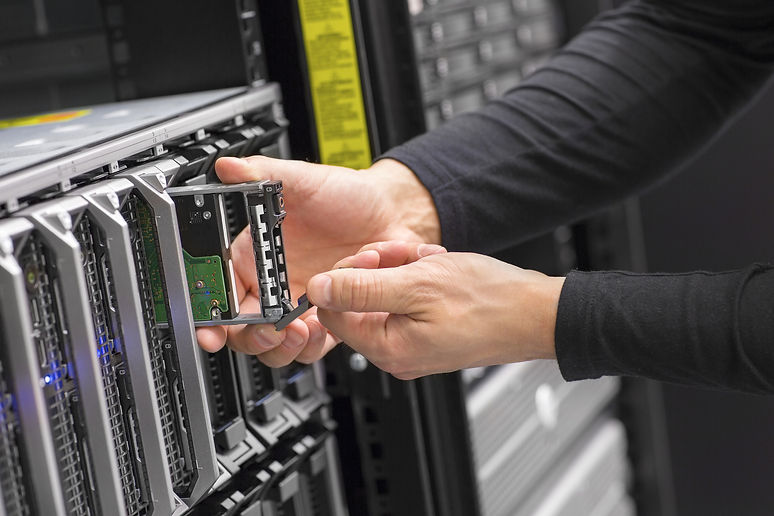Is Your Hard Drive Missing a Few Screws?

Dell Optiplex, Precision, and “non hot-plug” standalone server models have a flexible blue plastic 3.5 inch hard drive frame – with no screws required. The rest of the Dell PowerEdge server models require screws to attach the hard drive to the hard drive frame, which makes life a little more difficult for us. It might sound ridiculous, but one of the most common problems we see is missing mounting screws, or screws that are simply the wrong size. And, obviously, without the proper screws, you can’t install your hard drive.
Hard drives need to be screwed to the hard drive carrier frame with four mounting screws. Of course, 2.5-inch hard drives need smaller screws than 3.5-inch hard drives. However, there is a special converter you can use to install a 2,5-inch hard drives into a 3.5-inch drive bay – but in that case, you’ll need even more screws. Eleven, instead of four. We’ve found that there are some SSD drive suppliers that don’t supply the right size screws, and that can cause a lot of problems. It’s vital to have the correct screws to save the hard drive from future complications, and to save you a few headaches down the road. Generally, you should use the shortest screws needed to reach through whatever brackets hold the HDD. If the screws are too long and you tighten them all the way, you could damage the drive, but screws that are too short won’t hold things in place properly.


What type of hard drive should you choose?
In the past, hard drives were very storage size-focused. Now, hard drive manufacturers are trying a different tactic, focusing on storage speed and performance.
In order to get the maximum speed of the hard drive, backplane, cables, and controller all have to support same speed. Example - plugging a 6Gb/s hard drive into a 3Gb/s backplane will result finally in the speed being 3Gb/s.
The Dell PERC RAID Controller and other RAID/ SAS/SATA controllers can support a variety of hard drives. There are five main drive types used in Dell servers. (Keep in mind that the physical size of your hard drive will always be either 3.5 inches, 2.5 inches, or 1.8 inches.)
When you read the terms “consumer drive” and “enterprise drive,” just keep in mind that lower-priced consumer drives will not have been tested as thoroughly as more expensive enterprise drives.
So, what are the five types of hard drives?
Serial ATA (SATA): These are the basic hard drives in Dell PowerEdge servers. These have a few advantages over the older parallel ATA, including reduced cable size and cost, native hot-swapping, and faster, more efficient data transfer. SATAs are the cheapest drives, but their MTBF (mean time between failures) isn’t great. Most of the time SATAs fail on basic Dell server systems.
Near Line SAS: These are enterprise SATA drives with an SAS interface, head, and media, and the rotational speed of traditional enterprise-class SATA drives with the fully capable SAS interface typical for classic SAS drives. SATA drives provide better performance and reliability than SATA drives. Basically, this drive is a hybrid be- tween SATA drives and SAS drives.


Serial Attached SCSI (SAS):
SAS is a point- to-point serial communication protocol used in enterprise hard drives and tape drives, replacing the older parallel SCSI bus technology. SAS drives have higher RPM and are equipped with a bigger cache memory. These are the top-end in performance for electromechanical drives, but also much (much!) more expensive than SATA hard drives
Solid-State Drive (SSD):
An SSD is a data storage device that uses integrated circuit assemblies as memory to store data persistently. The development and increased use of SSDs has been driven a rapidly expanding need for higher I/O performance.
SSDs have much lower random access and read access latency than HDDs, making them ideal for both heavy read and random workloads. High-performance servers, lap- tops, and desktops, or any applications that need to deliver information in real-time, can benefit from SSD technology.
Non-Volatile Memory express (NVMe):
NVMe is a communication interface devel- oped specially for Solid State Drives (SSD). NVMe allows host hardware and software to get the most out of the parallelism made possible by modern SSDs. NVMe reduces I/O overhead and improves performance. NVMe is dramatically fast – the fastest drive that you can add to your server.
